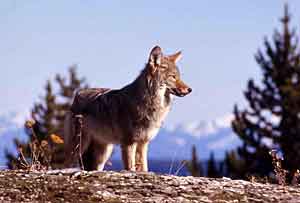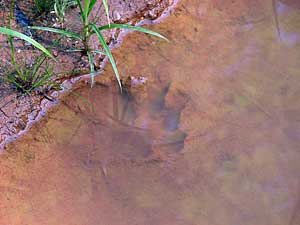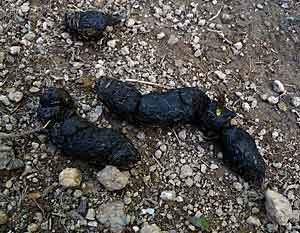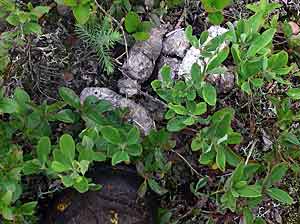 Coyote in Yellowstone Park Source: WeForAnimals  Footprint, likely that of coyote, near Windsor, N.S.  Fresh scat, likely that of coyote, Old St. Margarets Bay Road (Old Coach Road).  Older scat, likely that of coyote, Old St. Margarets Bay Road.
(Photos 2,3,4 by David Patriquin) Older scat, likely that of coyote, Old St. Margarets Bay Road.
(Photos 2,3,4 by David Patriquin) |
CoyotesCoyotes are sighted occasionally, more often their scat, on The Bluff Wilderness Hiking Trail. A CBC posting about the recent fatal attack on a young woman in Cape Breton by coyotes offers the following advice on how to act if approached by a coyote.Wildlife warnings One is more likely to observe coyote scat than coyotes. It is 12-33 cm (5-13 inches) long and 1-13.5 cm diameter;typically tapered at one end; contains fur, bone, plant and insect materials, possibly feathers; grey to black or bleached if older. "A good indication that you have found a coyote scat is its location. Coyotes often deposit their scat right in the middle of a trail or path as they use their scat as a territory boundary marker (along with urine). Scent from the anal musk glands is released with the scat, leaving a personal identification, similar to a fingerprint, for other coyotes to detect."1 1. Various sources; the quote is from http://www.stanleyparkecology.ca/programs/ conservation/urbanWildlife/coyotes/coyotesign.php |